How To Use Neem Oil On Plants: 3 Great Uses As A Garden Buddy, Plant Rescue & Pest Blaster – Why Neem Work Makes The Dream Work!
Ever heard of neem’s magic powers and wondered how it can help you in the garden? Here’s how to use neem oil on plants and how to get the best from neem to tackle pests
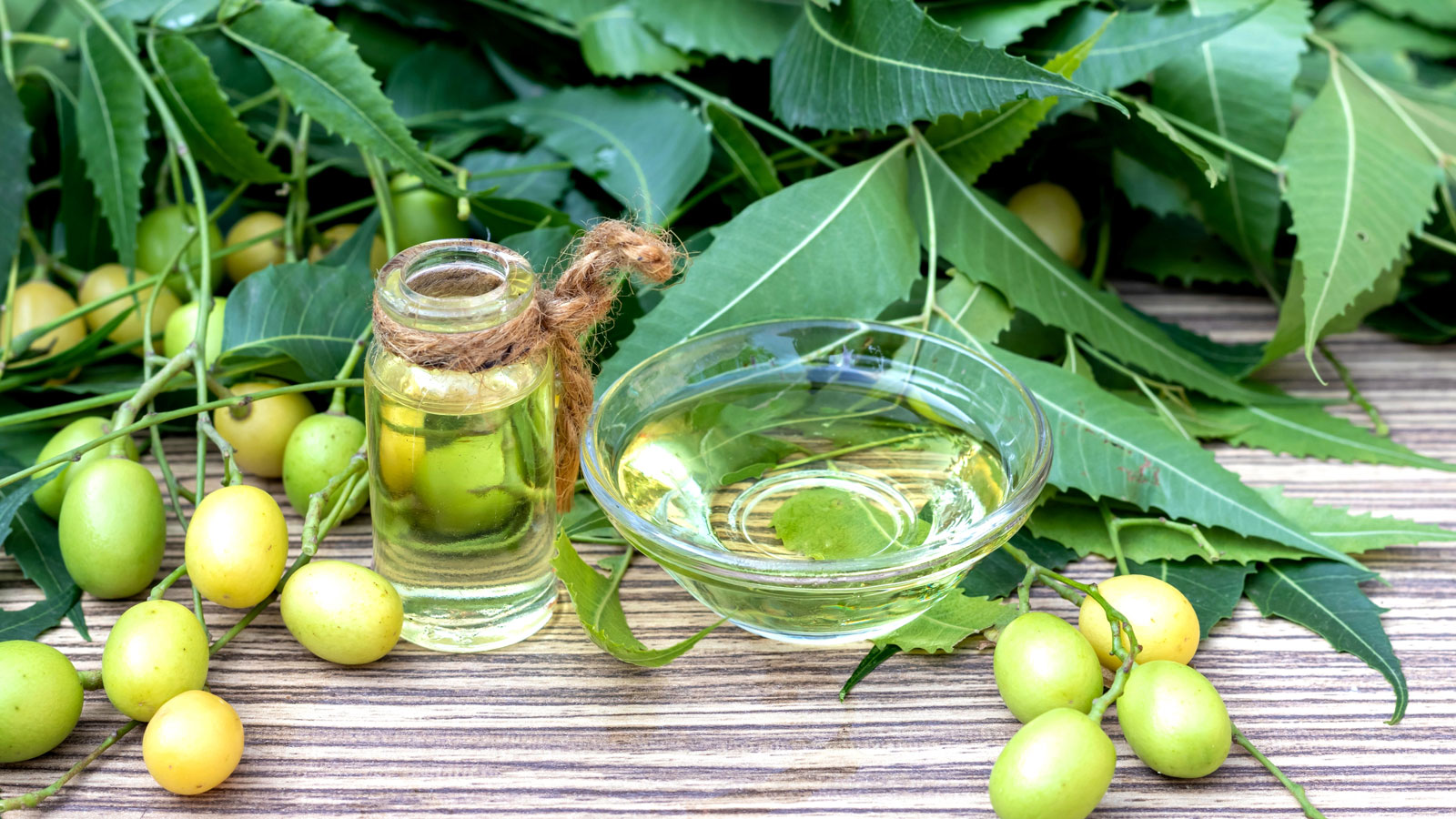

Amy Draiss
If you’ve spent any time reading about organic remedies for garden grumbles and pest problems, you’ve probably heard about neem oil. It seems to have a quiet super power in the garden. This naturally occurring oil from the neem tree is often deployed as a miracle save for plants that might have fallen foul of pests and diseases. It’s an eco-friendly alternative to chemicals if you are looking for organic gardening solutions to a few of the more common planting emergencies.
As a natural way of managing garden pests and problems, knowing how to use neem oil on plants will give you a very strong advantage. As well as supporting you in maintaining plant health in the form of eco-friendly insect sprays and solutions, it can also help you to protect yourself in the garden. Here’s how it helps to keep plants and gardens thriving, how to apply neem oil to plants, and how you can make your own neem oil garden buddy.
What is Neem Oil and How Does It Work?
Neem oil is a naturally occurring agent that comes from fruit and seeds of the neem tree (Azadirachta indica). It has a solid reputation going back hundreds of years in its native India, where it has been used in skincare and as anti-inflammatories. In recent years, it has also become an important organic option for those of us who feel like we are constantly trying to protect our plants from pernicious bugs and other problems.
So what does neem oil do for plants? As a natural organic pest control, neem oil works primarily by targeting a range of pests that may be feeding on your favorite plants. Applied as a diluted solution to the leaves of plants you want to treat or protect, specific pests are suffocated after ingesting the leaves. It’s a bit gruesome, but the oil blocks the airways of immature insects and larvae. Depending on the type of neem oil solution or method you use, certain neem oil agents also inhibit feeding or reproductive cycles.
Neem oil uses in the garden extend beyond natural pesticides. It can also be used as an insect repellent to deter certain pests from treated leaves. Neem oil solutions can also work as a barrier that prevents the spread of certain fungal infections – while it can’t heal affected plant tissue, it can stop fungal spores spreading to healthy foliage.
However, it’s important to note that neem oil can be dangerous to leaves if added in concentrated form. Any positive neem oil uses for plants would be outweighed by smothering leaves with the undiluted agent. It is best to use neem oil as a diluted treatment so you don’t inadvertently block airflow and photosynthesis in leaf cells.
Neem Oil Benefits in Garden
Alongside its various pest-thwarting abilities, one of the big neem oil advantages is that it is friendly to the leaves themselves. As long as you are using the neem oil correctly, either as a prepared homemade solution or insect spray, or as a commercially sourced product – and as long as you are not smothering the foliage with concentrated neem oil – there are no adverse effects to the plants.
Sign up for the Gardening Know How newsletter today and receive a free copy of our e-book "How to Grow Delicious Tomatoes".
Neem oil sprays and solutions are both organic and specifically geared towards tackling insects that are actively targeting your plants. And because of the complex nature of neem, those specific insects are not likely to build up an immunity, either. It is safe to use around the garden and can be deployed on the leaves of many crops safely as long as you follow guidelines for use.
There are no serious environmental side-effects to worry about. While being tough on plant foes, neem oil solutions are relatively safe for beneficial insects and pollinators that are not actively targeting the plant leaves for food. If the insect isn’t specifically chowing down on the foliage, it won’t be affected. Neem oil applications tend to work directly on the plant (usually directly on the leaves, although you can also add it in certain forms to compost or soil). So beneficial insects like ladybugs which don’t eat the leaves will not be harmed.
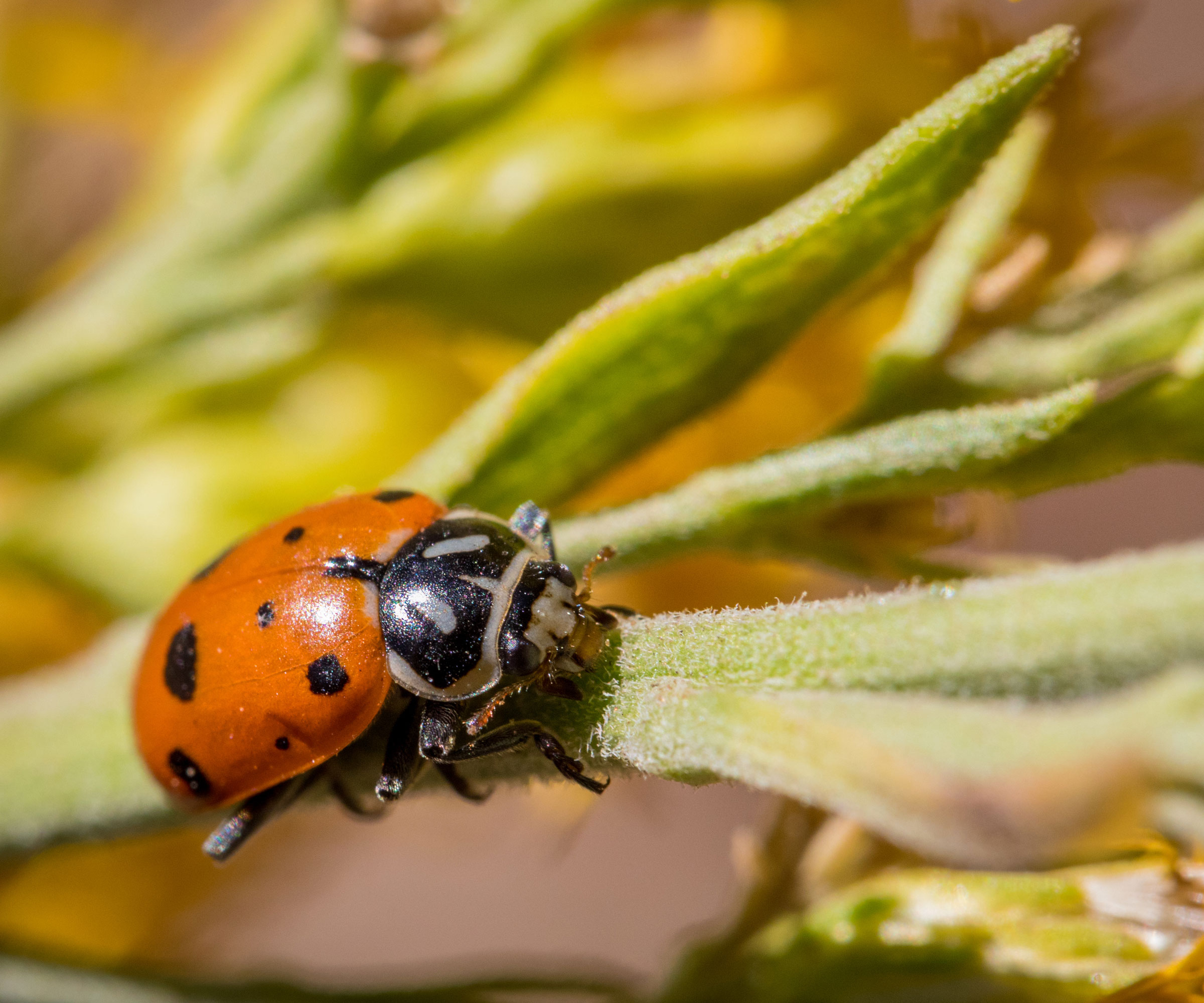
3 Neem Oil Uses in The Garden
There are several ways to reap the benefits from neem oil in your garden – but here are three of the most important in terms of plant health, pest management, and your own ability to relax in the garden!
- Use as a Pesticide: For an organic approach with a long rollcall of potential pest targets, neem oil is devastating as a pesticide. As well as being effective as a spray or solution during the growing season of plants, it can be used when certain plants are dormant as a way of targeting pests that might be overwintering, or eggs that have yet to hatch. So the full remit of pesticide possibilities is impressive. Use neem oil for aphids, beetles, whiteflies and fruitflies. Neem oil solutions and sprays are also effective in thwarting leafminers, cabbage loopers, mealybugs and thrips. As a miticide, neem can disrupt the life cycle of spider mites. You can also use neem oil for Japanese beetles. It is believed to prevent larvae from developing into adults.
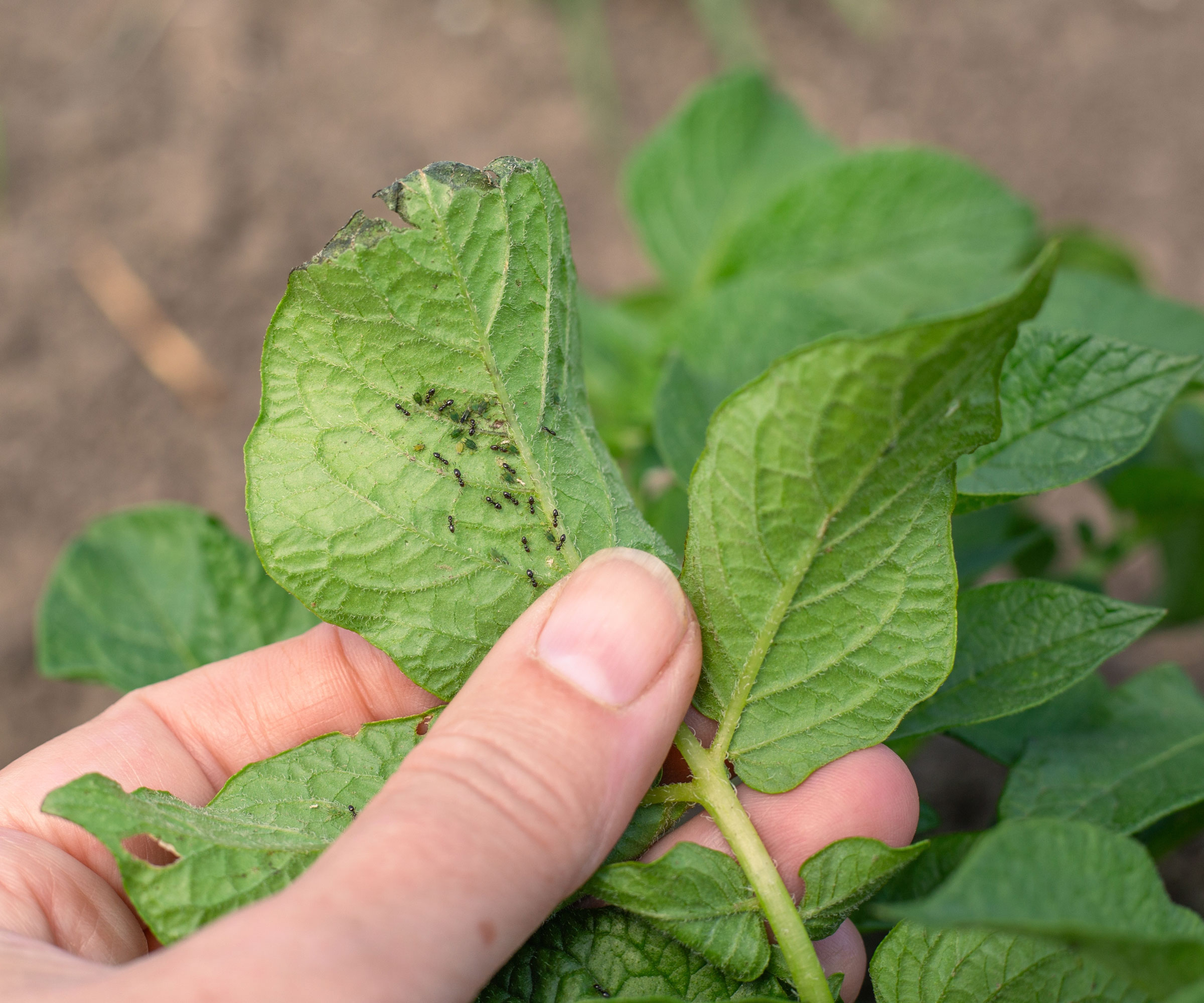
- Apply as a Fungicide: Several fungal diseases can be tackled by using neem oil either as a homemade fungicide or as a commercial multi-purpose agent. You can use neem oil for powdery mildew as a way of checking the spread of the fungal spores. You can also target fire blight and verticillium wilt, as well as black spot, leaf spot, anthracnose and rust. When applied as a foliar spray or leaf wipe, diluted neem oil or commercial neem oil agents can be used on ornamentals and crops, shrubs like roses and hydrangeas, and even trees. Bear in mind their effectiveness is geared more towards curbing the spread of fungal pathogens, rather than healing affected leaves. Use neem in tandem with good watering practice and adequate plant spacing.
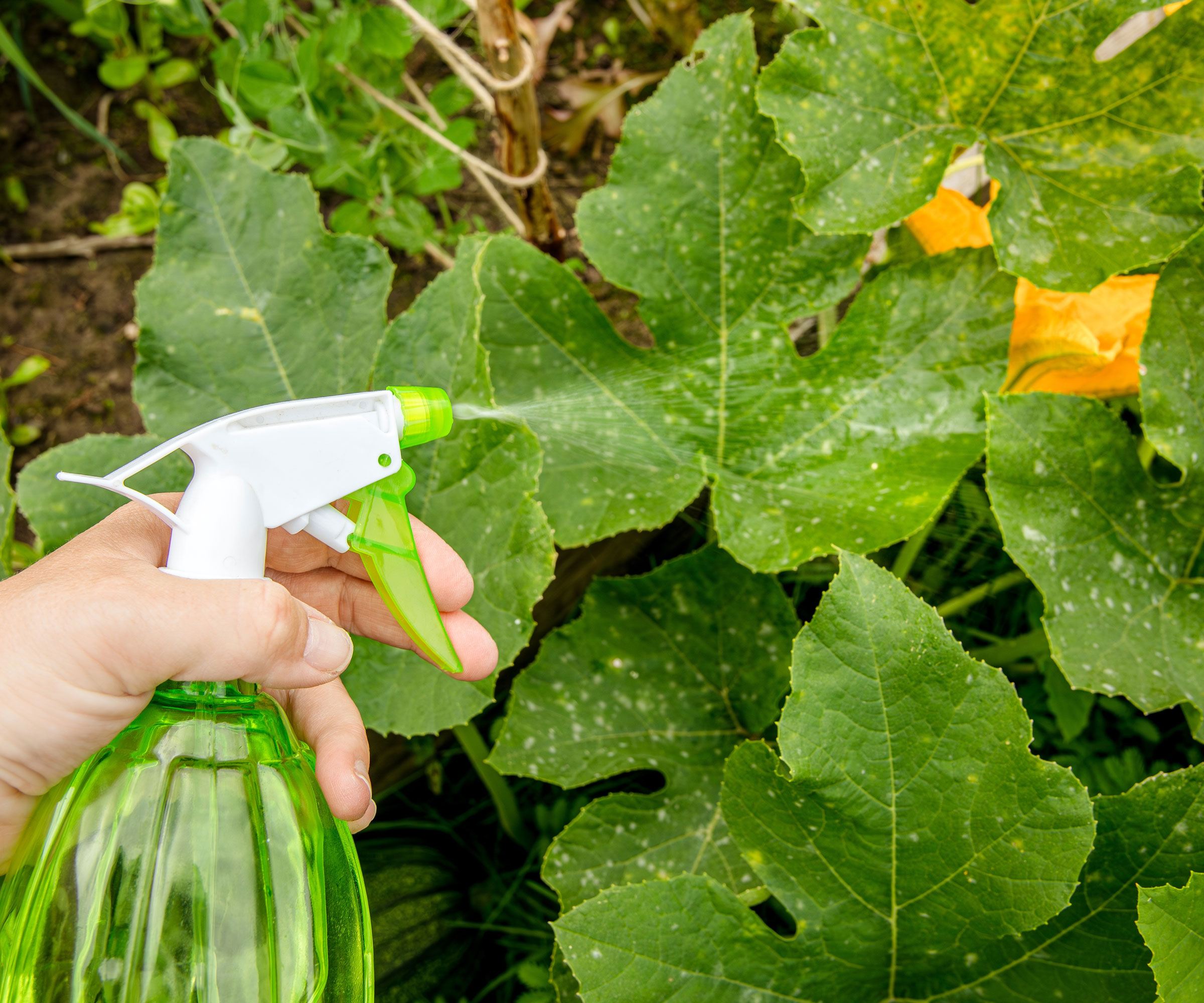
- Combat Mosquitoes: For any gardeners who are bugged by skeeters, neem oil has one other excellent advantage in the garden. As well as being an effective pesticide and fungicide, neem oil’s agency as a deterrent makes it one of the best methods for tackling mozzies organically. As well as working as a repellent, it actively disrupts the mosquito’s feeding and development cycle. So while it doesn’t kill them, it does reduce your chances of being bitten while you’re out in the garden. For the best results, try incorporating this into a wider range of mosquito controls in your backyard. Include other approaches such as the use of mosquito dunks from Home Depot, the presence of mosquito-repelling plants, and the removal of standing water.
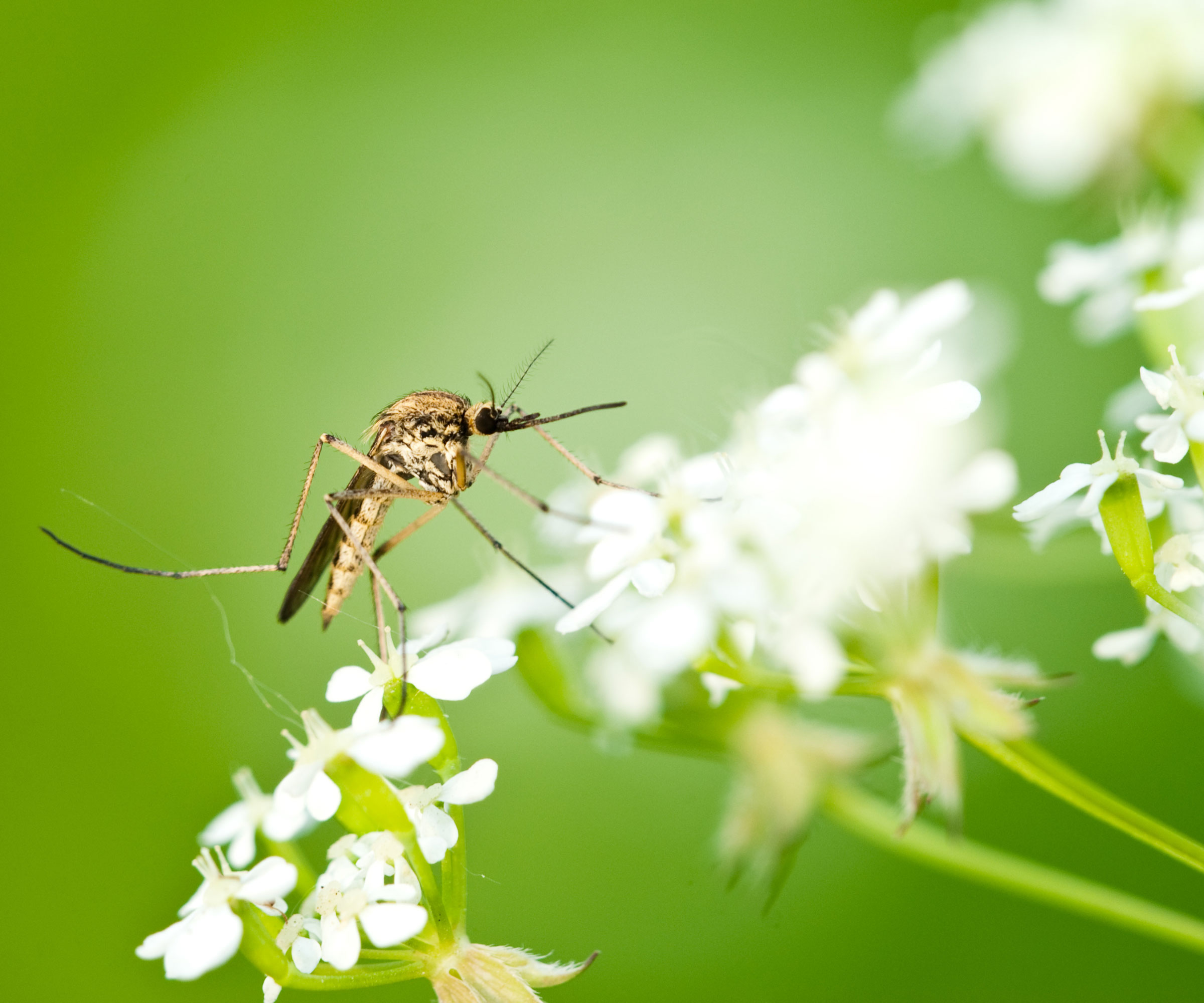
How to Use Neem Oil
The great thing about neem oil solutions and sprays is that you can use them at any point in the life cycle of a particular pest. And as long as you are not using your neem oil agent on very young plants or plants that are otherwise relatively healthy, you’re good to go. So neem oil sprays are just as effective if administered to, say, trees where you might have spotted eggs on leaves as they would be if you spotted an infestation of aphids or grubs actively feeding on the leaves of houseplants. You can even use neem oil agents on your lawn and as a soil amendment.
Neem oil agents require a steadfast, patient approach, and a willingness to commit to repeat applications on a weekly basis. The effectiveness of neem oil will start to wear off after a few days, especially if your garden gets hit by heavy rain. During the growing season, you will need to apply your neem oil agent every 7-10 days for the best results. Cover both sides of the leaves. Avoid spraying if temps rise above 90 degrees Fahrenheit (32°C) to prevent the risk of foliar burn. And hold your nerve – it may take time to see an upturn in plant health. This is about playing the long game, although you should see a decrease in pest numbers within a few weeks. Here are some of the best ways to use neem oil on your plants:
- Add as a Spray: Ideally, you should use a neem oil spray for plants either first thing in the morning or later in the evening, when there is less chance of foliar scorch (basically, leaf burn). Make a homemade spray (like the one outlined below), or use a readymade spray such as Bonide’s Captain Jack’s Neem Oil Organic Spray or Captain Jack’s Neem Max Ready To Use Spray from Walmart, which works as a fungicide, pesticide and miticide.
- Apply as a Wash: If you are targeting a few larger leaves on a houseplant such as a fiddle leaf fig, you can wipe a diluted neem oil solution across the leaves (top and bottom) using a microfiber cloth. Use Mr Siga microfiber cloths from Amazon which are gentler on leaves. In terms of the best neem oil for plants, one of the most reliable is Nature’s Will Pure Organic Cold Pressed And Unrefined Concentrated from Amazon, especially effective if added to an insecticidal soap. Make sure it is diluted; never apply in concentrated form.
- Use as a Cake: This is actually a powder derived from crushed neem kernels that you can add as a soil amendment, or as an ingredient to your compost. It contains compounds like azadirachtin, which repel various insects and nematodes. Neem cake also has antifungal properties. As well as making a good soil amendment, particularly for fruit trees, powdered forms can work as another means of pest control and checking growth of mildew and rust. Try Zatural Neem Cake Organic Fertilizer from Walmart.
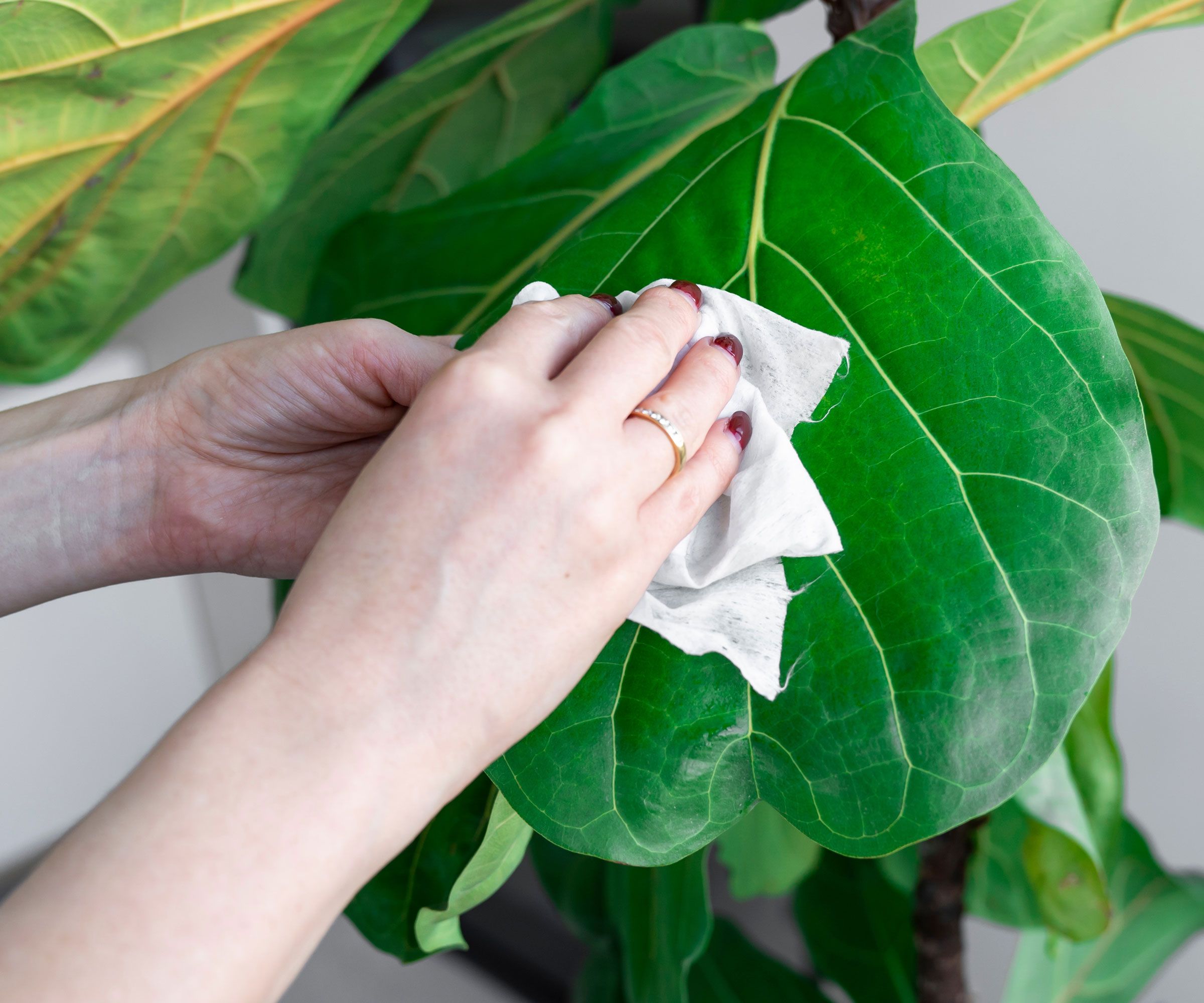
Make Your Own Neem Oil Garden Buddy
While there are some great ready-to-use neem oil pesticide / insecticide sprays available, you can also make your own using a few easily sourced ingredients. Make sure you’ve got a good pressure sprayer to hand. The T4U Hand Pump Sprayer from Amazon can hold half a gallon (2L) and has a comfy handle and a good action.
Some concentrates, such as Bonide’s Captain Jack’s Neem Max Concentrated Cold Pressed Neem Oil from Amazon, don’t require soap and can just be added to water. However, for other neem oil concentrates, you may find it helps to add a little soap as outlined here. Check with the particular neem oil product you buy, as this information should be specified on the label.
If you want to know how to mix neem oil for plants in a way that works well, give this recipe a try. But again, check the label on your neem product as you may not need to add the soap. For this ‘Neem OIl Garden Buddy’ insecticide spray you just need:
- 2.5 (37ml) tablespoons of cold pressed neem oil or neem oil concentrate
- 2.5 (37ml) tablespoons of pure liquid soap – try Castile soap from Amazon (alternatively, use an insecticidal soap)
- 1 gallon (3.8L) warm water
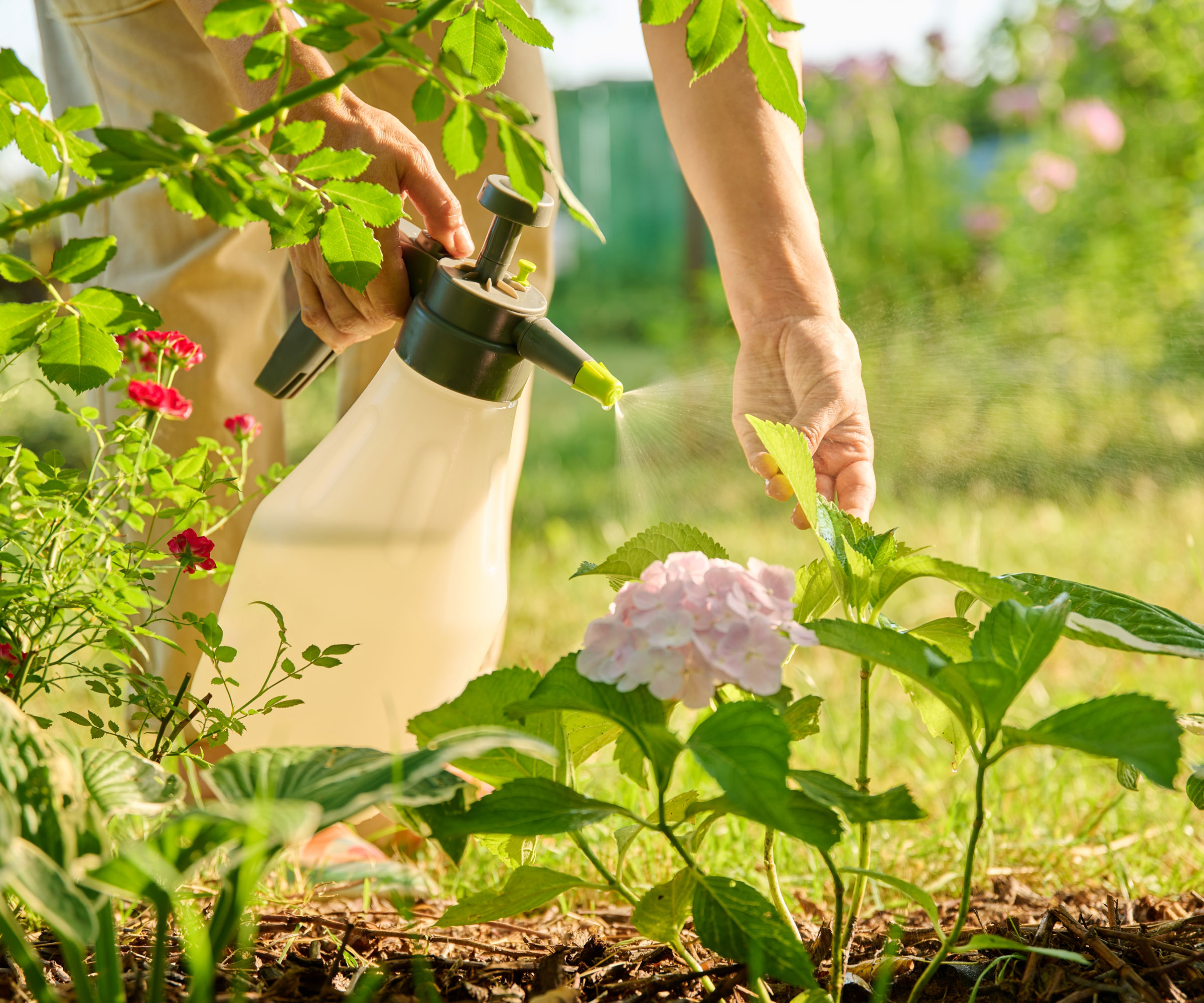
1. Boil the water and leave it until it is warm, then add the soap as an emulsifier for the neem, making it easier for the oil and water to mix effectively. Then add the neem oil.
2. Fill your hand sprayer or pump sprayer. Shake the bottle to help the ingredients mix. You may wish to do a test section of your plant first just to measure the effects and check there is no damage.
3. Once you are happy, you can mist the plant you suspect may be affected. Make sure you spray both sides of all leaves. Start at the top of the plant and work your way down. Use while the water is warm, as this makes the mixture more effective.
4. Repeat the process the following week for suspected infestations, You may also wish to use your cloth to wipe larger leaves or areas where you spot more extensive pest numbers, You can also apply the Neem Garden Buddy as a preventative measure, applying once a week to keep your plant feeling perky during growing season.
Frequently Asked Questions
Is neem oil safe for dogs and cats?
While a diluted spray that targets plant leaves or planting sites isn’t likely to cause your pooch harm, caution is required. Neem is considered toxic if consumed in large quantities. While you won’t be using neem in concentrated form, it isn’t a good idea to subject your dog to irritations, sickness, or worse. Try to prevent your dog from licking leaves or chewing leaves covered in neem.
Is neem oil safe for cats? Again, caution is advised. If you apply diluted neem oil directly to the leaves of a plant, follow bottle instructions with commercial products, and allow it to dry before a cat gets close, there should hopefully be no adverse effects. Used safely and correctly, neem should not cause problems for pets, according to the environmental protection agency (EPA).
Which plants should you not use neem oil on?
It’s generally best not to use neem oil solutions or sprays on very young plants or seedlings, which have a higher sensitivity to foreign agents. You may also find that neem oil solutions are slightly less effective on leaves that are especially hairy. Generally, the smoother the leaf’s surface, the more likely it is that the pest will feel the full force of the diluted neem oil.
It is also not a good idea to use neem oil solutions and sprays on plants in the middle of the day. Even in diluted form, neem can cause leaf burn if added when the sun is beating down. It can also increase the chances of problems for pollinators like bees which are more likely to be visiting treated plants at midday.
Does neem oil go bad after a certain time?
Kept in a sealed, airtight container in a cool, dark place, the concentrated oils or commercial neem products should keep for a while. Check the manufacturer’s instructions with any neem products you buy for the best storage conditions. You may well be wondering, does neem oil expire? Only in the sense that it can become less effective – it won’t become dangerous after a certain time.
However, neem oil’s efficacy can be compromised if not used quickly – specifically once neem concentrates have been diluted, or commercial products have been added to a spray bottle. It is best to use your neem oil plant solutions and sprays within a few hours of ‘bottling up’ for them to be at their most effective.

Janey is a former assistant editor of the UK’s oldest gardening magazine, Amateur Gardening, where she worked for five years. For the last few years, she has also been writing and editing content for digital gardening brands GardeningEtc and Homes & Gardens. She’s taken part in a range of conservation and rewilding projects for the Royal Horticultural Society (RHS) and the British Trust for Conservation Volunteers (BTCV) as a way of exploring her horticultural horizons. She is currently undertaking her RHS Level 2 certificate in The Principles of Plant Growth and Development.
- Amy DraissDigital Community Manager
